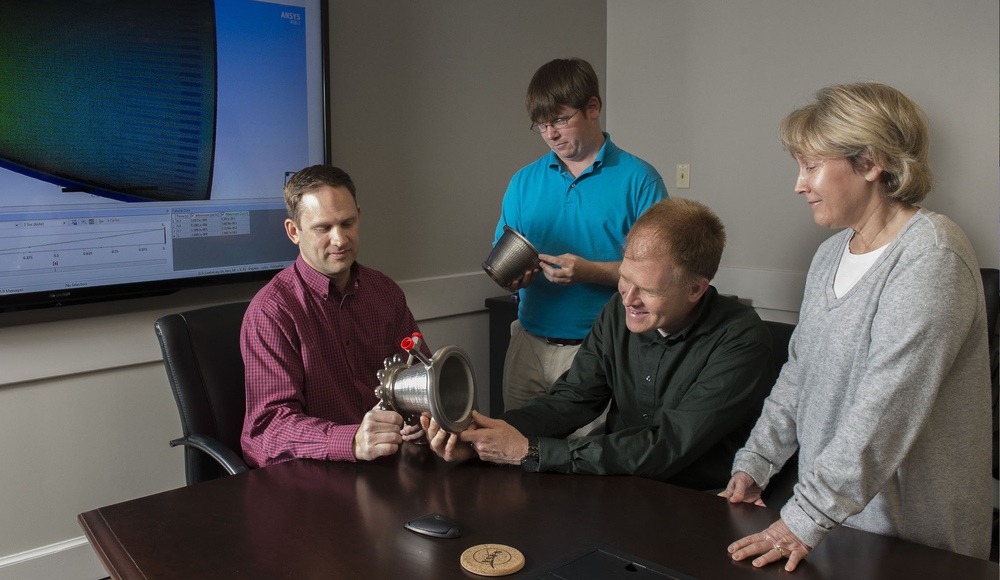Laser Wire Direct Closeout (LWDC) is a patented method of metal 3D printing developed by engineers at NASA’s Marshall Space Flight Center (MSFC) in Huntsville, Alabama.
Specially created for the additive fabrication of nozzles, the method is competitive in time and price against traditional manufacturing techniques.
Now in the process of licensing, NASA is looking to bring LWDC to the commercial sphere, “revitalizing and transforming” its “advanced manufacturing technologies for rocket engines.”
Precision manufacturing
LWDC is a directed energy deposition (DED) process, relying on a wire-based feedstock. In comparison with powder bed fusion (PBF) additive manufacturing techniques, LWDC is a freeform process.
Fabrication of a nozzle for rocket propulsion purposes is complex. The conical structure is manufactured with internal coolant channels, responsible for delivering high pressure fluid that protects the walls from overheating. In a regeneratively cooled nozzle, these channels must be sealed precisely to keep the coolant inside.
“The manufacturing process is further complicated by the fact that the hot wall of the nozzle is only the thickness of a few sheets of paper and must withstand high temperatures and strains during operation,” explains Paul Gradl, senior propulsion engineer at MSFC.
The LWDC process facilitates the precise closing of these channels. Engineers are now seeking other applications that could benefit from the process.

A traditional manufacturing competitive process
The goal was to consolidate the numerous and complex steps of traditional nozzle manufacturing processes with a robust additive manufacturing technique.
Accomplishing this task, the LWDC process also has the potential to reduce lead times from months to weeks, and “greatly reduce” the relative cost to produce a part.
Subsequent to 3D printing, nozzles made using the LWDC technique were hot fire tested at MSFC, “accumulating more than 1,040 seconds at high combustion chamber pressures and temperatures.”
Arc-based deposition has also been tested alongside this project, to produce a near net shape liner to contain water jet milled channels for nozzles.
Preston Jones, director of MSFC’s Engineering Directorate, comments:
“NASA is committed to revitalizing and transforming its already highly advanced manufacturing technologies for rocket engines,”
“What makes this development project even more unique is there were three separate, state-of-the-art, advanced manufacturing technologies used together to build a better nozzle and prove it out through hot-fire testing — an example of why Marshall continues to be a worldwide leader in manufacturing of propulsion technologies.”
Next generation rockets
In partnership with Auburn University, the MSFC was recently selected as a founding member of ASTM International’s National Additive Manufacturing Center of Excellence to help advance technology for the benefit of U.S. aerospace.
NASA is also heavily applying additive manufacturing to the development of its next generation Space Launch System (SLS),scheduled for launch between 2022 and 2023.
Hot-fire testing of the RS-25 SLS engine, containing a 3D printed pogo accumulator. CLip via NASA Stennis on YouTube
For aerospace news and more subscribe to the 3D Printing Industry newsletter, follow us on Twitter, and like us on Facebook.
Looking to get involved in a new additive manufacturing project? Join 3D printing jobs for the latest vacancies from FATHOM, Formlabs and more.
Vote now in the 2018 3D Printing Industry Awards for technologies and research projects of the year. Want to design the trophy? Enter the 2018 3D Printing Industry Awards design competition. sponsored by Protolabs now.
Featured image shows hot-fire testing of a 3D printed nozzle at NASA’s Marshall Space Flight Center. Photo by David Olive/NASA/MSFC


